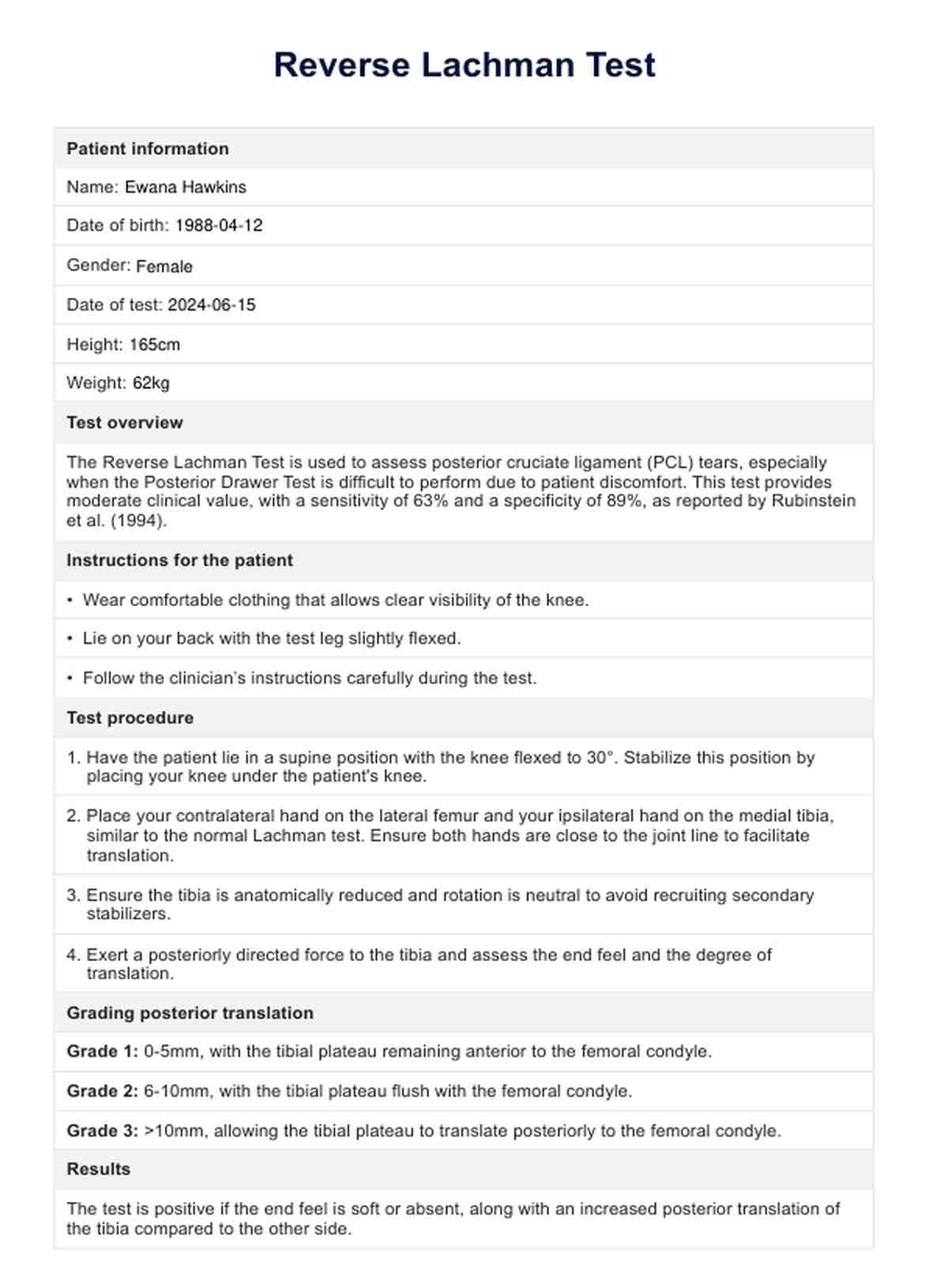The Reverse Lachman Test is used to assess the integrity of the posterior cruciate ligament in the knee. It helps diagnose PCL tears by evaluating the posterior translation of the tibia relative to the femur when the knee is slightly flexed.

Reverse Lachman Test
Discover how to perform and interpret the Reverse Lachman Test to diagnose PCL tears. Download our free template and enhance your physical therapy practice today!
Reverse Lachman Test Template
Commonly asked questions
The Reverse Lachman Test assesses the PCL, while the standard Lachman Test primarily evaluates the anterior cruciate ligament. The positioning and direction of force applied during the tests differ to target these specific ligaments.
A positive Reverse Lachman Test indicates a potential tear in the posterior cruciate ligament. This is identified by a soft or absent end feel and increased posterior translation of the tibia compared to the unaffected side.
EHR and practice management software
Get started for free
*No credit card required
Free
$0/usd
Unlimited clients
Telehealth
1GB of storage
Client portal text
Automated billing and online payments











